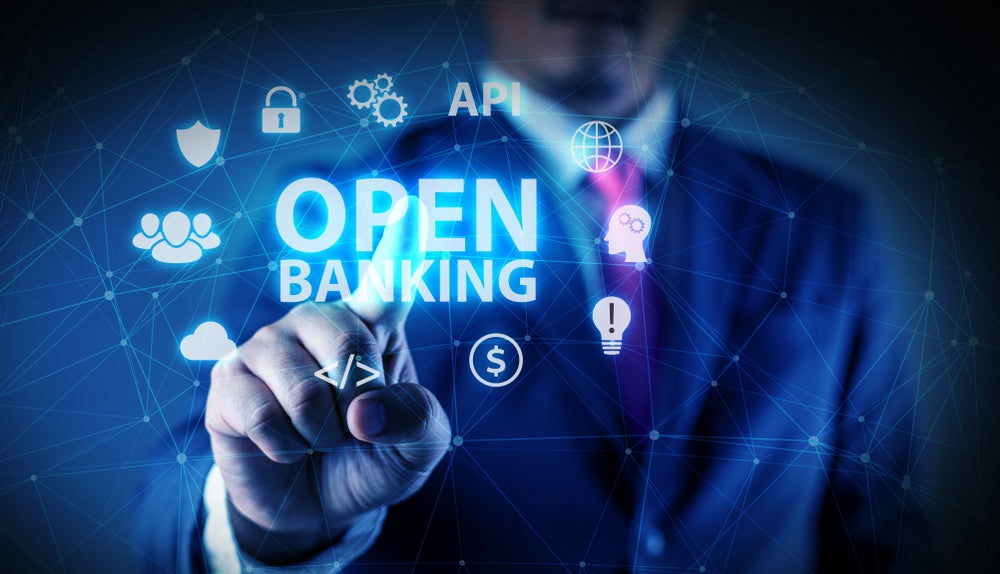The digital conundrum has been circling the financial industry for years now. Chaired by the editor of RBI, Douglas Blakey, and hosted by Assurant, a select group of financial minds came together to discuss this ever-present question. Patrick Brusnahan reports on the highlights of this discussion
Held in the financial hub of London, the roundtable considered digital’s role in the financial equation. Obviously, with the adoption of the Internet and smart devices growing with no end in sight, digital is something that the banks cannot, and have not, been ignoring.
Questions still surround whether the banks are doing enough though. While close to every financial institution has some sort of mobile or online presence; are they fit for purpose? This is in regards to both the institution and the consumer gaining as much from the digital experience as possible.
Douglas Blakey: The first question I’d like to ask is: Should we be welcoming digital engagement?
Nicholas Stefanovitz (Vice President, UK Acquisition & Digital Engagement, EMEA Emerging Payments, American Express): Yes, I would say so. Digital is not an option for us, we want to be omnichannel. From our prospective point of view, we don’t have branches in the UK, so it’s digital only. The mindset has shifted over to the engagement side.
Bhavik Sangvhi (Digital Channels, Metro Bank): Digital is a vital part of the banking experience. We use internal launches to identify the vast majority of problems with our app. There will always be some that our customers alert us to, but we continually gather feedback to improve the app. We believe this is necessary for us to improve the product.
Douglas Blakey: What sort of metrics are you looking at to gage the level of engagement? Is it number of logins?
Bhavik Sangvhi: The statistics that we use are based on the number of log-ins per month. Alongside that, we also see transaction volumes. For us, the success measure would be they use the app a certain number of times where there are no Metro Bank stores.
Clare Dean (Mobile Roadmap & Features manage, TSB): TSB is very focused on how we can serve our customers without necessarily having that branch presence. It’s making sure that as a new bank we can maintain the right message and metrics when you’re not engaging with customers face to face.
How well do you really know your competitors?
Access the most comprehensive Company Profiles on the market, powered by GlobalData. Save hours of research. Gain competitive edge.

Thank you!
Your download email will arrive shortly
Not ready to buy yet? Download a free sample
We are confident about the unique quality of our Company Profiles. However, we want you to make the most beneficial decision for your business, so we offer a free sample that you can download by submitting the below form
By GlobalDataJulie Baker (Head of Enterprise, Business Banking, NatWest): Key findings (from the BBA Way we Bank now report) suggest that those who do use our apps are the most satisfied and often score us higher in terms of NPS (net promoter score). Internet and mobile banking is now used for transactions worth £6.4billion a week, up from £5.4billion last year. We are seeing banking apps for mobiles downloaded at a rate of 15,000 per day.
Scott Manson (Head of Digital Strategy and Proposition, Visa): Ultimately, the mobile channel is great for engagement, but you don’t have the ability to cross sell and use it as a revenue generating tool. How do you counter balance that?
Douglas Blakey: Can we see a stage where we start to monetise digital by charging given the low interest rate environment?
Venkatraman Calidas (SVP, Digital Products for Payments, Investments, FX & Wealth Management, Citi): At the moment, differentiated pricing strategy, to encourage customers to use digital, is serving us well. There is a huge saving enabling all interactions to be digital. However, we do need the phone channel for complex queries or transactions. It is important to track why a customer would choose other channels when more convenient options are available. Since we offer almost all transactions online, we are closely tracking why customers still call us. Could it be that the user experience is poor?
Douglas Blakey: At what stage do you see in the UK where the mobile or tablet app is also a sales channel?
Nicholas Stefanovitz: How you define sales? We’re tracking app downloads, usage, logins, but we also have offers on the app. It enhances customer engagement and everyone’s happy. There’s a lot you can do with the app to monetise without charging. We’ve asked ourselves if we should push certain things and so far it’s a no because the purpose of the app has to remain as servicing.
Bhavik Sangvhi: That’s a very interesting point because availability is different to pushing. It’s not selling; it’s making the option available. It’s a different vertical in the digital channel itself as you’re getting a value added service at a cost but for servicing, charging wouldn’t be ideal.
Douglas Blakey: If I go into the Metro banking app with just a current account, can I apply for a credit card?
Bhavik Sangvhi: The culture at Metro Bank does not believe in cross selling or push selling, that is why we don’t do that. Our colleagues do not have any sales targets; they are measured only in customer service. We don’t think we’re missing anything. Our customers come to us because we’re different and we don’t want to change that.
Tracey Rogers (International Business Development Leader, Assurant): At Assurant Solutions we are continually pulsing customer feedback and satisfaction scores. In addition, we undertake bespoke consumer research. Recently, which I found surprising, the research indicated that customers who are very engaged with the app, are comfortable paying for other products and services.
Venkatraman Calidas: On our website, customers see banners which announce new products and offers tailor-made to the customer. The trick is to do it so we are not seen as pushing but being there for the customer.
Tracey Rogers: Coming back to Amex and VISA, you have a different relationship with customers to the high street banks because you are a credit card provider, not a bank account provider. How do you face this challenge? You have the digital platforms, but are they really the only channels?
Nicholas Stefanovitz: It’s the classic strain that we try to find our way around and find our strengths somewhere else.
Scott Manson: The idea behind Visa is that we’re there to help make payments simpler, quicker, and faster. What we have to do, our key thing is try and take the friction out of payments. Where can we affect change there? We understand that you have to make changes that allow your customers to be in control and we can do that by providing some functionality through our systems.
Rajat Garg (EMEA Head of Mass Affluent, CIti): At the core of what we’re trying to do is customer engagement. We’re not trying to sell a feature; we’re trying to sell an experience. What banks have been trying to do is to simultaneously improve the convenience for the customer and reduce costs. The digital channel becomes an enabler for that strategy.
Douglas Blakey: If the customer experience is so crucial and banks are so customer centric, why is it that so few banks have invested in an optimised tablet app?
Nicholas Stefanovitz: At the beginning with websites, everyone tried to cram it all onto a mobile, but realised that it doesn’t work, you have to be mobile optimised. The tablet comes in just when you get an optimised version for mobile. It takes time.
Rajat Garg: The bigger challenge is how do you design the entire banking and present it in e-channels? Start with a proposition and then see if the digital feature can come in.
Anna Milne (RBI): Is it pushy having the option available on an app to apply for another product?
Scott Manson: You can do it already with simplistic products. It’s when you get into the complex credit card or loan space where you would have seven pages of Terms and Conditions and that doesn’t really work on a mobile channel.
Anna Milne: So is it not worth trying to simplify?
Scott Manson: Well, speak to the regulator. It’s more of a case of: "Is your legal or risk department willing to sign off a credit card based on a tick box?" Probably not at this point in time. It’s not a great sell for the mobile space, you don’t want to be there for 30 minutes; you want to be there for 30 seconds.
Douglas Blakey: Would it be appropriate while using the mobile app to be offered the chance to be upgraded?
Scott Manson: It depends again if that’s appropriate and if you have enough information to make that decision. I would say that we don’t. The whole balance is now where you focus your customer.
Bhavik Sangvhi: From a customer perspective, they prefer being offered products via internet banking rather than mobile, especially as there is the reassurance of two-level authentication security there. People tend to access mobile apps whilst they’re out and about and aren’t looking to review products.
Tracey Rogers: There is now a mind-boggling amount of data that is being collected across the globe by various financial players. The amount of data is huge. We now know so much about how customers are behaving, what they’re doing and how they interact with financial services. Isn’t it now about how we create customer intelligence and customer value with the data?
Bhavik Sangvhi: In the digital space, data is changing every day. We have to catch up with the times. We definitely need to look beyond financial data and transactions people are undertaking. Customers are happier with non-financial benefits than financial benefits because they can get financial products from any bank. It’s about customising as much as possible. That is only possible if you start understanding their choices and using that to give them rewards outside banking.
Rajat Garg: Historically, banking has never really done a good job with data.
Nicholas Stefanovitz: These platforms were never built with the purpose of taking data and using it for customer experience purposes or cross selling. There is still the strategy of making the experience and the offers more relevant. For example, we’ve partnered with TripAdviser and we matched our data. AmEx customers can actually choose to see the reviews from Amex customers only. That adds a layer of credibility.
Tracey Rogers: Isn’t it about understanding the relationship not just with the credit card or the banking provider, but the customer’s lifestyle and it’s tapping into what’s important to them, not necessarily the credit card and banking world?
Clare Dean: Unfortunately, banking back-end solutions are still not as dynamic as in other industries. Until that time, you need to find the little tweaks that can make or save you a lot of money without huge costs. You don’t necessarily need fancy new products or push communications, just moving a button or changing a colour can make a difference.
Douglas Blakey: Would I be fair in suggesting that there’s a bit of room for improvement if banking apps were to learn lessons from some of the best non-banking apps?
Rajat Garg: Historically, banks have always done these sorts of things in-house and banks need to open up. It’s a big cultural change for a bank to say: ‘Okay, we don’t know everything; there might be others who can help us. While we need to learn a lot from these new players, these new players also need to learn a little about the real world of banking. The fact that the industry is hiring such people is a recognition of that we have things to learn.
Tracey Rogers: Looking at gamification as a form of interaction, is that on any of your radars?
Julie Baker: For many years, RBS visited Schools to present their MoneySense programme which was a well received and valued service. It is now available as a free interactive programme online with a wide range of activities.
Douglas Blakey: Our award for "Retail banker of the year" went to Garvan Callan; the head of digital at Bank of Ireland due to his drive not just to improve digital in terms of improving customer experience, but the drive to generate revenue. Has that drive fed through?
Nicola St. Louis (Channel Development Business Analyst, Bank of Ireland): I think it’s definitely something that’s on, especially as we don’t sell our products directly to market in the UK. We’re doing it through the Post Office. For us it’s all about being digital because how often can we engage with our customers if they can’t pop into a branch, how would they build a connection with the bank and not the Post Office?
Douglas Blakey: In terms of gamification, should banking be fun or simple?
Scott Manson: Ultimately, it is really simple at this point in time. People think passwords on apps are hard or difficult, I don’t know how much simpler you can make that without making it a little bit risky. These are the kind of things that we need to balance. It’s certainly moving towards a more convenient side of things, but there has to be a form of security there.
Douglas Blakey: Bringing it back to potential revenue generation, is there any scope to work with new players?
Scott Manson: 3rd parties are finding ways to work around you, not with you, especially from a payments perspective. We’ve got to find ways to open ourselves up as organisations to say ‘actually work with us’ rather than being defensive. In that way, you can become more of a friend than a foe and that’s the kind of attitude we’re trying to set.
Bhavik Sangvhi: We shouldn’t see them as a threat, we should see them as a value-add. The industry is more collaboration rather than competition. Technology is in competition with banking because banks are seeing them as competition. Once we start looking at them as collaboration, it will work better.
Clare Dean: I think it’s all about collaborating. It goes back to your point of two extremes, you work together, and who knows, it might work, it might not, as we’ve discussed, try these things. Why put those barriers up when you can have a chat instead?
Douglas Blakey: Is this a good point to be in retail banking in the UK?
Rajat Garg: There are grounds for optimism. The retail banking business model is still evolving because the route that everyone’s taken is taking up costs and serving the customer by providing convenience through the digital route. It’s a work in progress. There’s a lot going for London, it has a very vibrant fintech centre. The next three to five years should be very exciting here.
Julie Baker: I think it’s a very exciting time. I can see a lot of new which are required to keep ahead of customer demands. I think the banks needs to work together, get some fintech experts in and see what they can do. We’re seeing more non-bankers being recruited in the digital teams and that adds real value.
Scott Manson: One of the biggest calls we have from our strategy department is how do we become digital? That’s the conversation we have with most banks. I don’t think anyone’s cracked it yet. There will be winners and losers in this. It will be an interesting space over the next few years.
Marissa Alleyne (Channel Development Business Analyst, Bank of Ireland): It’s really good for the customers at the moment due to the emergence of the challenger banks and new entrants. You’re creating a position where even the larger banks are being forced to rethink their strategies. There’s so much more competition now and the customers are going to get true value with their bank accounts now. It’s a real challenge for the current leaders to keep rotating their thinking. Nobody’s mastered digital yet, but it’s pushing everyone in the right direction.







